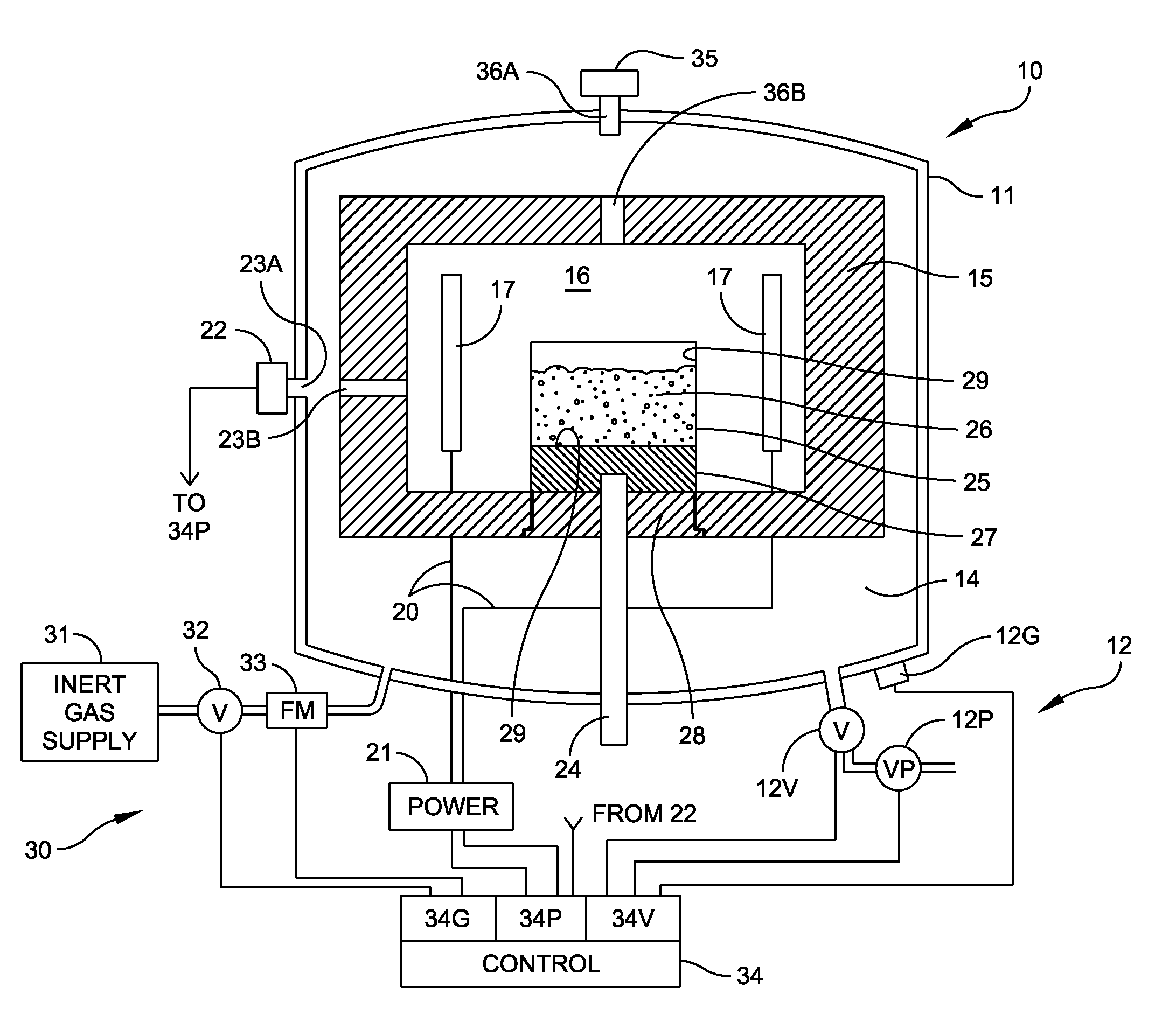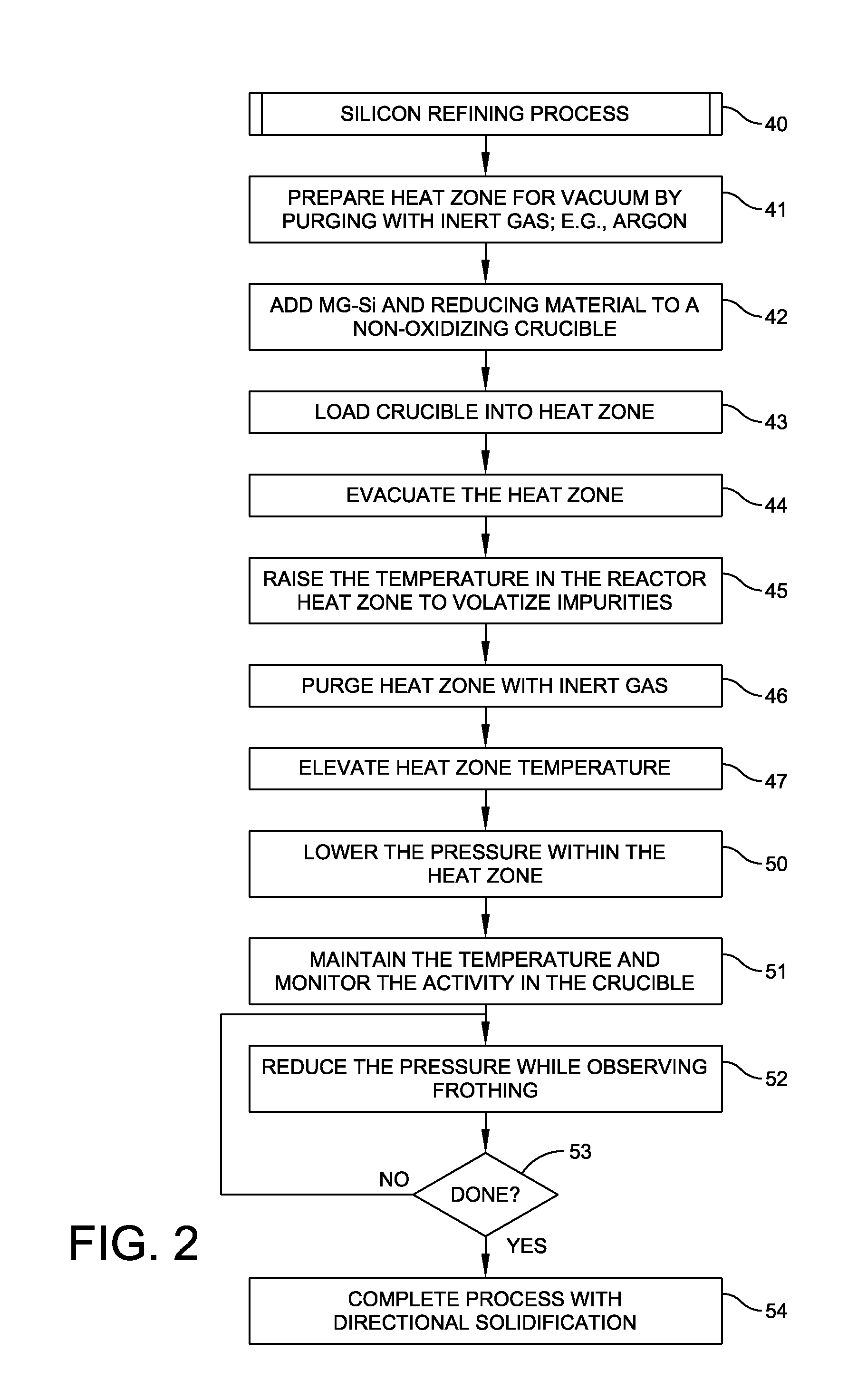Method and Apparatus for Refining Metallurgical Grade Silicon to Produce Solar Grade Silicon
a technology of solar energy and metallurgical grade, applied in the field of silicon production, can solve the problems of not being able to constitute a cost-effective alternative, solar energy systems remain too costly, and solar energy systems are not yet available, so as to promote directional solidification
- Summary
- Abstract
- Description
- Claims
- Application Information
AI Technical Summary
Benefits of technology
Problems solved by technology
Method used
Image
Examples
example
[0039]In this example, a MG-Si composition, as defined in FIG. 4 was refined using calcium disilicide (CaSi2) as the calcium-based reducing agent. Step 41 prepared the reactor 10 by removing any contaminants in the heat zone 16.
[0040]In step 42, the crucible 25 was loaded with 300 grams of MG-Si having the impurity elements as shown in column A of FIG. 4 and with calcium disilicide (CaSi2) to 25% by weight of the silicon. After loading the crucible 25 into the reactor in step 43, the vacuum pump 12 was energized in step 44 to evacuate the reactor 10 to about 0.032 mbar. Step 45 caused the resistance heater 17 to elevate the temperature to 1170° C., and then step 46 enabled the gas supply 31 to backfill the reactor 10 with an inert gas. In this example, argon was selected to backfill the reactor to about 60 mbar.
[0041]When these conditions were reached, the control 34 in step 47 elevated the temperature of the heat zone 16 to 1473° C. to melt the crucible contents. Then step 50 slowl...
PUM
| Property | Measurement | Unit |
|---|---|---|
| temperature | aaaaa | aaaaa |
| temperature | aaaaa | aaaaa |
| pressure | aaaaa | aaaaa |
Abstract
Description
Claims
Application Information
 Login to View More
Login to View More - R&D
- Intellectual Property
- Life Sciences
- Materials
- Tech Scout
- Unparalleled Data Quality
- Higher Quality Content
- 60% Fewer Hallucinations
Browse by: Latest US Patents, China's latest patents, Technical Efficacy Thesaurus, Application Domain, Technology Topic, Popular Technical Reports.
© 2025 PatSnap. All rights reserved.Legal|Privacy policy|Modern Slavery Act Transparency Statement|Sitemap|About US| Contact US: help@patsnap.com



